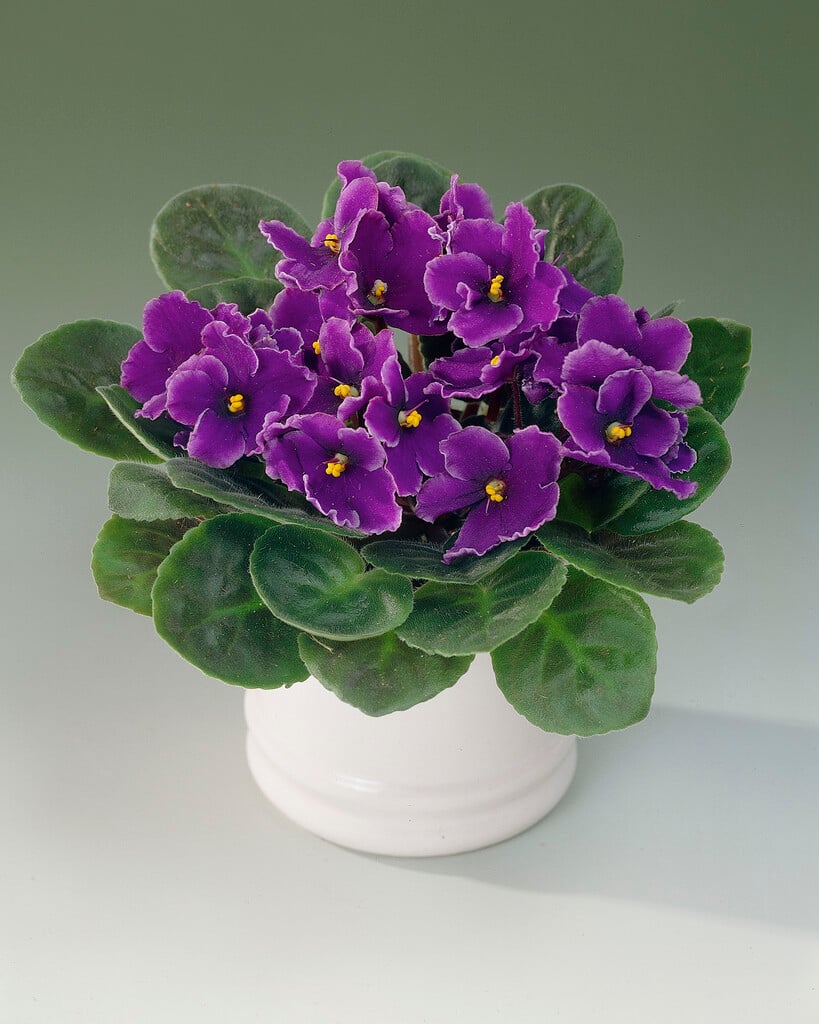Streptocarpus ionanthus (AV)
African violet
An evergreen, rosette-forming, frost-tender perennial to 10cm tall. The almost round, fleshy, hairy leaves up to 8cm long are green above and often reddish-green below and have long stalks. Two to eight violet-blue, tubular flowers up to 2.5cm across are held in loose clusters above the foliage all year-round

Size
Ultimate height
Up to 10cmTime to ultimate height
2–5 yearsUltimate spread
0.1–0.5 metresGrowing conditions
Moisture
Moist but well–drainedpH
Acid, NeutralColour & scent
| Stem | Flower | Foliage | Fruit | |
| Spring | Blue Purple | Green Red | ||
|---|---|---|---|---|
| Summer | Blue Purple | Green Red | ||
| Autumn | Blue Purple | Green Red | ||
| Winter | Blue Purple | Green Red |
Position
- Partial shade
Aspect
South–facing or East–facing
Exposure
Sheltered Hardiness
H1ABotanical details
- Family
- Gesneriaceae
- Native to GB / Ireland
- No
- Foliage
- Evergreen
- Habit
- Matforming
- Genus
Streptocarpus can be annuals, perennials or subshrubs, with usually wrinkled, lance-shaped to rounded leaves and clusters of tubular to trumpet-shaped flowers with 5 spreading lobes, often borne throughout the year
- Name status
Correct
- Horticultural Group
- African violets are now classified under the genus 'Streptocarpus'. They are small, compact perennials with rosettes of hairy leaves and clusters of small, tube-shaped colourful flowers
- Plant range
- Tanzania
How to grow
Cultivation
Grow as a houseplant in free-draining compost on an east or west-facing windowsill, or grow in a temperate or warm greenhouse in bright filtered light with shade from hot sun. Water sparingly as compost dries in winter and in the growing season water freely allowing compost to dry out between waterings; feed fortnightly with a high-potassium fertiliser. See Streptocarpus cultivation
Propagation
Propagate by leaf cuttings in summer
Suggested planting locations and garden types
- Patio and container plants
- Low Maintenance
Pruning
Remove dead leaves
Pests
May be susceptible to glasshouse leafhoppers, mealybugs, thrips, vine weevil and tarsonemid mite
Diseases
May be susceptible to grey moulds (botrytis) or powdery mildews
Get involved
The Royal Horticultural Society is the UK’s leading gardening charity. We aim to enrich everyone’s life through plants, and make the UK a greener and more beautiful place.